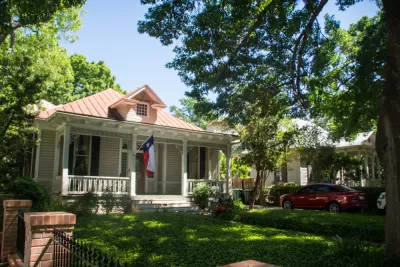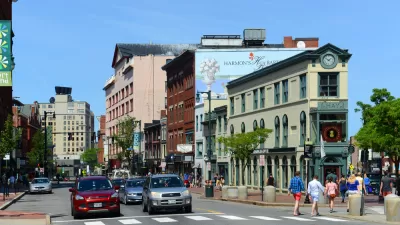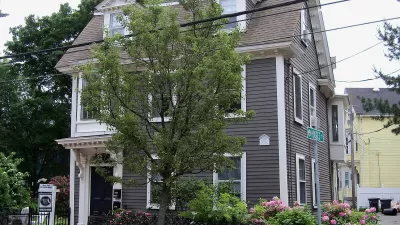As the city considers loosening regulations on accessory dwelling units, one writer argues that the reforms would boost affordable housing and provide more options for changing household needs.

A San Antonio Report piece by Jim Bailey argues in favor of reforming the city’s regulations governing accessory dwelling units (ADUs) to make it easier for homeowners to build ‘granny flats’ and meet the changing needs of families. As Bailey states, “Currently, our city’s development code allows homeowners to build ADUs, but outdated restrictions make it difficult for owners to build them. Removing these barriers should be part of a larger strategy that looks at how San Antonio can grow responsibly.”
According to Bailey, “San Antonio added more residents than any other city in the country last year, and is projected to add a million more by 2050.” Bailey offers one possible solution. “One simple thing we can do to build resilience in neighborhoods like we used to have is to make it easier to build modest accessory dwelling units.” Bailey highlights the benefits of ADUs: the ability for multigenerational families to live together while maintaining privacy and autonomy, an opportunity for renters to live affordably in neighborhoods previously inaccessible to them, a source of income for homeowners, and an affordable option for seniors who want to “age in place” in their neighborhoods.
In San Antonio, Bailey writes, “Our Removing Barriers to Affordable Housing Development & Preservation Subcommittee, as instructed by our Council-adopted Strategic Housing Implementation Plan, has been working on a series of code changes that make sensitive insertions of modest ADUs into neighborhoods a little easier to achieve.” These include reduced restrictions on ADU occupancy, uniform height limits, and a clear metric for allowable square footage.
While Bailey and housing advocates recognize that boosting ADU construction is by no means a silver bullet for solving the housing crisis, “the proposed amendments help ameliorate growing housing pressures” in a fast-growing city.
FULL STORY: Removing barriers to building accessory dwelling units is the right move for San Antonio

Maui's Vacation Rental Debate Turns Ugly
Verbal attacks, misinformation campaigns and fistfights plague a high-stakes debate to convert thousands of vacation rentals into long-term housing.

Planetizen Federal Action Tracker
A weekly monitor of how Trump’s orders and actions are impacting planners and planning in America.

Chicago’s Ghost Rails
Just beneath the surface of the modern city lie the remnants of its expansive early 20th-century streetcar system.

Bend, Oregon Zoning Reforms Prioritize Small-Scale Housing
The city altered its zoning code to allow multi-family housing and eliminated parking mandates citywide.

Amtrak Cutting Jobs, Funding to High-Speed Rail
The agency plans to cut 10 percent of its workforce and has confirmed it will not fund new high-speed rail projects.

LA Denies Basic Services to Unhoused Residents
The city has repeatedly failed to respond to requests for trash pickup at encampment sites, and eliminated a program that provided mobile showers and toilets.
Urban Design for Planners 1: Software Tools
This six-course series explores essential urban design concepts using open source software and equips planners with the tools they need to participate fully in the urban design process.
Planning for Universal Design
Learn the tools for implementing Universal Design in planning regulations.
planning NEXT
Appalachian Highlands Housing Partners
Mpact (founded as Rail~Volution)
City of Camden Redevelopment Agency
City of Astoria
City of Portland
City of Laramie





























